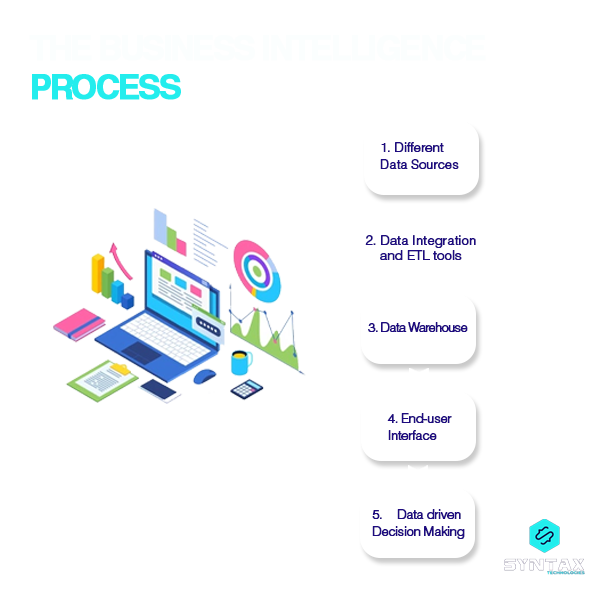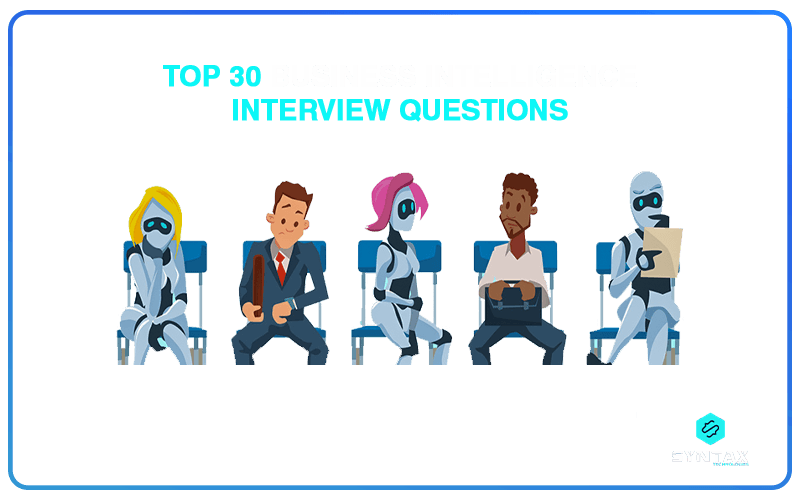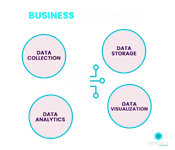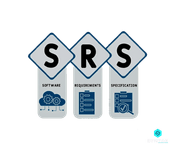Business Intelligence is essentially timely, accurate, high-value, and actionable business insights, and the work processes and technologies used to obtain them
Business Intelligence backed by the force of Data Analytics has emerged as a promising trend for the future. Consequently, Business Intelligence Analysts and experts have emerged as IT professionals whose demand is increasing by leaps and bounds.
So, if you too happen to be someone who is looking to make through a Business Intelligence Interview; this list of top 30 Business Intelligence Interview Questions, will certainly be of huge help.
If you wish to read more on the job prospects within the field of Business Intelligence, refer to our blog on, Business Intelligence Jobs: A Career to Look Forward to?
In this blog, we shall look at some of the most important Business Intelligence Analyst Interview Questions. Additionally, we shall also look at the Amazon Business Intelligence Engineer Interview Questions as well as SQL Interview Questions for Business Intelligence Analyst.
Business Intelligence Interview Questions: Basic Level
1. What is Business Intelligence?
Business Intelligence can be understood as a combination of Data Analytics and the processes of data collection, data storage and data management. The aim of Business Intelligence is to make business processes data-driven, through evaluating and converting raw data and information into actionable and meaningful insights.
These insights have a positive impact on the different kinds of business decisions of the organization. In simplest terms, a Business Intelligence definition would refer to an umbrella which covers data tools, data visualization, business analysis, data mining, infrastructure, data analytics and so on, in order to provide easy and understandable summaries which could help organizations to take decisions which are data-driven.
2. Name some of the prominent Business Intelligence tools.
Some of the popular BI tools include:
- Tableau
- Sisense
- QlikView
- Power BI
- Pentaho
- Zoho Analytics
- Dundas BI
- SAS
- Jaspersoft
- Yellowfin
If you wish to read more about these Business Intelligence tools, refer to our blog on Top 10 Business Intelligence Tools
3. What is a universe in Business Analytics?
Universe can be understood as the semantic layer between the user interface and the database. It is actually the interfacing layer between the client and the data warehouse. It helps in defining the relationship between different tables in a data warehouse.
4. What are the steps in a Business Intelligence process?
This is one of the classical Business Analyst Interview Questions
The first step in the Business process model involves the collection of raw data from all possible data sources. The data is then stored in a data warehouse or in smaller data marts. Additionally, data lakes can also be used as storage facilities for sensor data, log files and other kinds of semi structured or unstructured data.
The next step involves cleaning, integration and consolidation of data by data quality management and data integration tools. Data has to be converted into a state where they become suitable for analysis. This is the data preparation stage.
After that, the Business Intelligence analysts and other professionals perform analysis of data by asking queries, requesting ad-hoc reports and so on. At the end, the results obtained from the query are transformed into reports, dashboards, data visualizations and online portals.
This valuable insight which is now available in an easy and understandable form is then used by project managers, business executives and so on, for strategic planning and decision making.

5. What is Data Warehousing?
Data Warehousing can be understood as a repository system which is used to analyze and report data from different heterogeneous sources. These data are essentially available from the SQL Server, Excel Sheet, Oracle Database or Postgres. Data Warehouse makes use of the repository mechanism, through which a business analyst is able to fetch all historical reports related to that data.
6. What are some of the features of a Data Warehouse?
- It is a separate database with the responsibility for storage of information records and is kept segregated from an operational database
- Analyzed and processed data obtained from a data warehouse, helps decision makers take tactical and strategic decisions
- Analyzing data present in the warehouse helps business analysts in viewing existing business trends
- It is also responsible for consolidating historical data analysis
7. What are aggregates?
Aggregates can be understood as a form of data which is found in the aggregate table. In order to calculate these aggregates, different aggregate functions are used. These include max, min, count average and so on.
8. What are some of the benefits of Business Intelligence?
Some of the advantages of Business Intelligence include:
- Accelerating the process of Decision Making
- Improving the Decision Making Process
- Optimization of the Internal Business Process through Business Process Modeling
- Operational Efficiency
- Provides for Competitive Edge
9. What do you mean by the following terms: OLAP, DOLAP, MOLAP, HOLAP, ROLAP?
OLAP: It stands for On-Line Analytical Processing. It refers to a category of technologies and applications which provide for the collection, storage, manipulation and reproduction of multidimensional data with the objective of analyzing it. It helps in executing complex analytical calculations, along with carrying our sophisticated data modelling.
DOLAP: It stands for Desktop OLAP. These are small OLAP products for local multidimensional analysis. Data is essentially stored in cubes on a desktop and is designed for single, low-end departmental user. It’s akin to having one’s own spreadsheet.
MOLAP: It stands for Multidimensional OLAP. It operates as a shared environment which is targeted at groups of users. It provides for complex analysis of data wherein data is stored in a server-based format.
ROLAP: It stands for Relational OLAP. It facilitates multidimensional analysis of data stored in relational databases.
HOLAP: It stands for Hybridization of OLAP. It might include any of the above.
10. What is OLTP?
This is another very common BI Interview Question.
It stands for Online Transaction Processing. These can be seen as an expansive collection of small data transactions like delete, update, and insert. They function as operational databases and help in producing quick processing of a query. It is also the determinant of the consistency and integrity of data. The efficiency of an OLTP system is measured by the number of transactions per second.
Business Intelligence Analyst Interview Questions
11. What are the key responsibilities of a Business Intelligence Analyst?
This happens to be one of the most common aptitude Business Intelligence Analyst Interview Questions.
Data Acquisition: Business Intelligence Analysts are required to develop strategies for collecting, processing and analyzing data. They also play a role in deploying data to data warehouses.
Data Interpretation: A Business Intelligence Analyst plays a crucial role in deriving valuable insights from data by way of interpreting it. These patterns, correlations and trends, so identified, help in preparing strategies for business improvement.
Data Presentation: A Business Intelligence Analyst is responsible for sharing data analytics findings with clients, stakeholders and other teams.
They are responsible for comprehending the existing state of business and promoting business development and acting as the vertical bridge by way of transmitting high value information to decision makers.
Business Intelligence Analysts are expected to oversee the process of Big Data handling and even have a say in framing intelligence gathering priorities in future. Thus, they play a pivotal role in business process management.
12. What are the different kinds of documents used by Business Intelligence Analysts?
The software development life cycle involves a number of documents and some of the most important ones which are of utility to BI Analysts, are:
- Business Requirement Document
- Initiation Document
- Requirements Traceability Matrix
- System Requirements Specifications Document
- Use Case Specifications Document
- Functional Requirement Document
- Gap Analysis Document
- Change Request Document
13. What do you mean by Gap Analysis? What are the different types of gaps which can occur during an analysis?
Gap analysis refers to the analysis of the difference between the functionalities of an existing and targeted system. The given difference which is the gap will hint at the changes which will be required to achieve a proposed result.
Types of gaps:
- Manpower Gap: Change between the actual and required workforce strength within a company
- Market Gap: Variation between estimated actual sales
- Profit Gap: Change between the actual and the estimated profit of a company
- Performance Gap: Difference between expected and actual performance
14. What are some of the skills that Business Intelligence Analysts are expected to possess?
Knowledge of Coding and Programming Languages: As a Business Intelligence Analyst, you might be required to build mechanisms which could help in the analysis of data. Consequently, an understanding of coding languages like Java, Python, R and others, become important.
Knowledge of Database Tools: It is important for these individuals to be proficient in the handling and management of data. This requires knowledge of tools such as SQL and Excel.
Knowledge of Data Visualization services: It is not just enough to collect and analyze data. The information would make no sense unless they are presented in understandable forms to the decision makers. Thus, Business Intelligence Analysts need to have an understanding of such services as Tableau, Power BI and others which help in producing visually appealing Data Visualizations.
Excellent Communication and Problem-Solving Skills: Business Intelligence Analyst Jobs are often considered to be bridging positions which connect different parts of the organizations. These individuals are responsible for sharing findings with those responsible for taking decisions.
Knowledge of Data Modeling Concepts, Data Mining Tools, Data Warehouse Architecture, Data Analytics Process and Business Analysis Process Flow.
15. What do you mean by MoSCoW and SWOT?
This is one of the important Business Intelligence Analyst Interview Questions, because awareness of these terms gives an idea that an individual is aware of the processes used to generate and execute strategies for identifying the needs of an organization.
MoSCoW stands for Must or Should, Could or Would. This is a process of prioritizing the framework requirements. A business analyst should be prudent enough to understand whether a particular requirement or need is a must-have or a should-have.
SWOT stands for Strengths, Weaknesses, Opportunities and Threats. SWOT analysis is quite a popular strategy which is used within organizations to decide upon the allocation of resources. A business analyst should be aware of the strengths as well as weaknesses, of impending threats as well as possible opportunities.
16. What is SRS? What are its key elements?
SRS is the acronym for Software or System Requirements Specifications. It can be understood as a set of documents which describes the features of a software system or application. Some of the fundamental elements of an SRS are:
- Functional and Non-functional requirements
- Scope of Work
- Dependencies
- Acceptance Criteria
- Data Model
- Assumptions and Constraints
SQL Interview Questions for Business Intelligence Analyst
17. What is SQL?
SQL stands for Structured Query Language and is essentially used to communicate with relational databases. When you are working with relational databases, SQL works as the standard language which can be used to update, retrieve, delete and insert data.
18. What is Self JOIN, CROSS JOIN and INNER JOIN?
Self JOIN works as a query which helps in joining a table with itself. It helps in comparing the values of a particular column with other values in the same column of the same table. It uses aliases to name the duplicate and original tables.
CROSS JOIN refers to a Cartesian product on the sets of records from two or more joined tables. Here, the number of rows in the first table is multiplied by the number of rows in the second table.
INNER JOIN assists in returning all rows which are shared by two tables. It is analogous to identifying the intersection or the overlap between two sets of data.
19. What is a subquery? What are its different types?
A subquery refers to a query within a query. The outer query is the main query; while the inner query is referred to as the subquery. The subquery is executed first and then the result is passed on to the main query.
Types of subqueries:
- Correlated: It uses value from the outer query and is thus dependent on it.
- Uncorrelated: This is an independent query whose output is substituted into the main query.
20. What is a primary key?
A primary key is essentially a unique identifier for a particular record in a table. It can’t be null. However, a primary key can be a single column or a combination of columns in a table. Each of the tables can contain only one primary key.
Amazon Business Intelligence Engineer Interview Questions
Amazon is definitely one of the global corporate mammoths. Moreover, as one of the foremost technology companies, it has resorted to leveraging Big Data for improving its extensive E-Commerce platform.
With a trillion dollar market capitalization and a complex business structure comprising of countless teams and dozens of departments, the company harbors a staggering mass of corporate data.
The responsibility of drawing meaningful insights and deriving strategic conclusions through the analysis of this data, rests in the hands of Business Intelligence Engineers at Amazon. The process of recruitment might involve the following interview stages:
- Phone Screen/Initial Screen: The focus here is to gauge whether or not a candidate will be a good fit for a specific professional position. It generally involves basic questions focusing on past work experience.
- Technical Screen: This round generally involves live technical screening for testing your fundamental technical prerequisites. It involves questions on SQL, Data Visualization, Python, along with those pertaining to Business Analytics. It can be conducted through a live coding platform.
21. Write a query to identify the manager with the biggest team size.
The question can be solved in multiple ways. In one way, you can resort to the MAX function. Another route is to create a sorted list grouped by the manager name. If you go by the second choice, you will be able to make use of the basic aspects of SQL.
On-Site Interview
This stage involves 5-6 individual rounds with Data Scientists, BI Engineers and a Hiring Manager. Each of the rounds usually lasts for 45 minutes to 1 hour. Candidates can expect more in-depth questions which span across the length and breadth of data science concepts, are scenario based and provide for more substantive screening.
Questions can involve qualifying requirements, whiteboarding problems, checking edge cases and so on. There can also be questions focused on real business problems faced by Amazon in the past as well as those focused on Amazon’s Leadership Principles.
Additionally, there will be questions to assess your basic statistical knowledge.
22. Tell us about a time when you made a design decision where a lot of people had opposed you. Why did they oppose you?
23. Tell us about a time when everything was going well on a project, and still you worked on an improvement which was not really asked by anyone. What was the improvement? Why did you think it was needed? How would you measure success?
24. Tell us about a time when you had a conflict and even had multiple ways of resolving it. How did you evaluate your options? Which solution did you choose and why?
25. Elaborate on a situation when you received critical feedback from a customer.
BI Interview Questions: Advanced Level
In this section, we shall look at some of the more complicated and technical Business Intelligence Interview Questions.
26. State the difference between OLAP and OLTP.
27. List the differences between a Data Warehouse System and a Transactional System.
28. Explain the difference between a Snowflake Schema and a Star Scheme.
29. Elucidate the difference between a Fact Table and a Dimension Table.
30. What is Ragged Hierarchy?
A ragged hierarchy is essentially a user-defined hierarchy which has an uneven number of levels. In the case of a normal hierarchy, each level has the same number of members above it as any other member at the same level. A ragged hierarchy is an exception in this case because here the logical parent of at least one member is not in the level immediately above the member.
Conclusion
Data is the new asset. There is no dearth of it; however, success lies in being able to optimally utilize it for guiding business decisions. Moreover, data driven decision making has helped in providing organizations with an extra edge over its competitors. Consequently, the quest of making it through Business Intelligence interviews is rampant across aspiring professionals.
This guideline of Business Intelligence Interview Questions and Answers is meant to give you a fair idea of what all you can expect as you prepare for a BI interview. The Business Intelligence Analyst Interview Questions are meant to acquaint you with the professional requirements of the position of a BI Analyst.
Moreover, the section on Amazon Business Intelligence Engineer Interview Questions has been synoptically presented to give you an idea of the BI interview process in one of the largest corporate houses on the global platform.
Given the soaring prominence of the field of Business Intelligence, it will only be worthwhile to consider a career in the domain.
We, at Syntax Technologies, provide you with the remarkable opportunity for fulfilling your aspiration of being a BI expert through or diligently curated Business Intelligence course. Enroll now:








